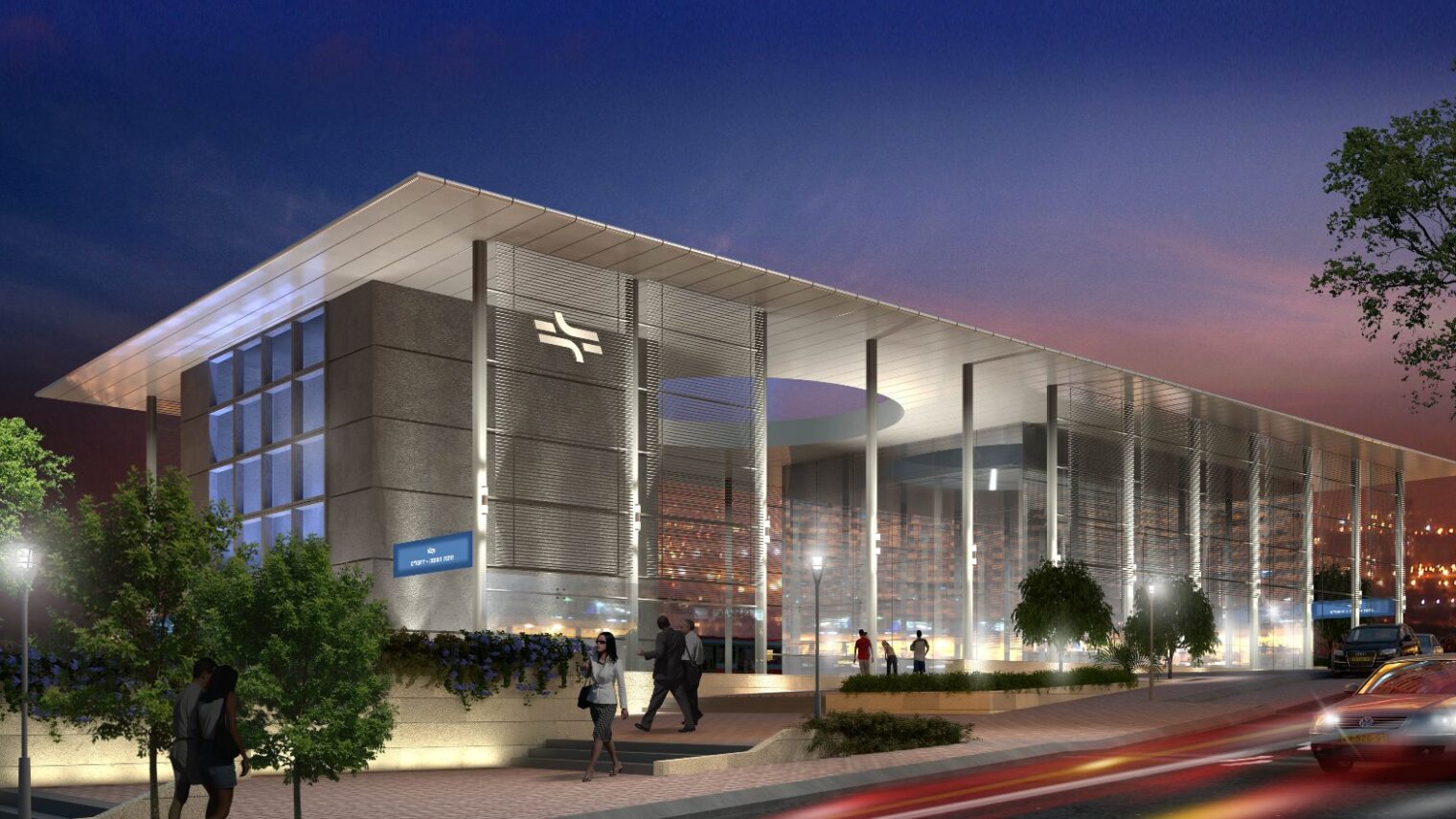After donning a hardhat, safety vest and construction boots, I recently got a personal peek at the future high-speed railroad linking Tel Aviv and Jerusalem.
This rail line will revolutionize travel between the country’s two biggest cities, bringing residents and visitors into the heart of Israel quickly for work or leisure.
Currently it takes about an hour to drive the approximately 60 kilometers (37 miles) northwest from Jerusalem to Tel Aviv, though traffic jams often lengthen the trip. An old scenic train route chugs along from the remote southwest corner of Jerusalem, winding around the hills and making several stops before reaching Tel Aviv two hours later.
When it opens in the first half of 2018, the high-speed route will take less than 30 minutes, including a stop at Ben-Gurion International Airport. It will service Tel Aviv’s existing four railway stations and a new transportation hub alongside Jerusalem’s Central Bus Station and light-rail stops.

The fast train is the biggest Israel Railways projects in the past decade and one of the biggest infrastructure projects in modern Israeli history, costing the government just under $1.9 billion. Nine bridges and four tunnels enable as straight and flat a route as possible.
“The bridges are up, the tunnels are dug; now we’re working on the electro-mechanics and putting down the rails,” says Israel Railways spokeswoman Batsheva Segev Landau at the Israel Railways Visitor Center in Sha’ar Hagai.
10 years in the making
Getting to this moment took more than 10 years due to massive engineering and environmental conundrums.
“One of the biggest challenges with this line is the topography because trains can’t go beyond a 3 percent slope up. Coming up to Jerusalem you can either go around the mountains — as the Turks did on the line from Jaffa to Jerusalem, which is very slow — or make tunnels through the mountains or bridges over them,” Landau explains.
On the flat portion from Tel Aviv to Latrun, the high-speed trains will use existing tracks. From there, they will be on bridges or inside tunnels before reaching the Jerusalem terminal built 80 meters (262 feet) below street level.
About 30 of the 38 kilometers of tunnels (doubled to serve both directions, except the final tunnel into the Jerusalem station) were dug with a tunnel boring machine (TBM) that simultaneously carves into the mountain in the front and lays cement in the back, without drilling and blasting.

Tunnel 3 is the longest in the Mideast, at nearly 12 kilometers (7.4 miles). Emergency connecting tunnels were dug every 250 meters.
Each surrounding stone removed in the tunneling was numbered and replaced to cause the least possible disturbance to the landscape.

The earthquake-proof balanced cantilever bridges – including the highest railroad bridge in Israel at 95 meters over the Arazim Valley, and the longest at 1,250 meters spanning the Ayalon River – are supported by very few legs to leave the valleys pristine.
“Everything in this project was never done in Israel before so each part was done in collaboration with an experienced foreign company,” says Shahar Wiesman, head of communications for Israel Railways.
“We worked with French, Russian, German and Spanish companies. The big benefit for Israel is now we have engineers with the knowledge to do things they never did before.”

In the tunnels
Wiesman and spokeswoman Lital Ventura took ISRAEL21c to watch workers putting down the first tracks in Tunnel 2.
We proceeded to gape at the engineering feat that is Bridge 10 over the Arazim Valley, and finally entered the construction site of the Jerusalem terminal.
“This station is among the five deepest in the world,” Ventura says.
The underground infrastructure was placed at minus-80 meters, including three generators in case of electricity outages.

Four entrances lead to a glass-enclosed piazza at street level. After going through security, passengers will descend through two levels of shops and cafés, ending up on the train platforms at minus-70 meters.
Four escalators and four large elevators are placed for optimum flow. Most passengers will use the escalators, whose direction can be changed by the station manager according to the direction of heaviest foot traffic.
“There will be four double-decker trains in each direction every hour, each accommodating about 1,000 people,” says Ventura, meaning potentially 4,000 passengers passing through the station each hour.

Still to be built are a covered passageway to the Jerusalem Central Bus Station and 1,200-space subterranean parking lot.
High curved ceilings over the platforms are made of a smoke-absorbent material in case of fire, providing 20 minutes to evacuate passengers safely. The station also has a bomb/nuclear shelter to fit 2,000 people.
The terminal has a sophisticated air circulation system but pollution from the trains isn’t an issue since they’re electric. Israel Railways expects to electrify all its 431 passenger trains by 2024.

“Up to now, Israeli trains worked on diesel but this line is completely electrified,” Wiesman explains. “Once you electrify you can speed up trains. Today they go about 130 to 150 kilometers per hour, while these will travel 160 to 200 kilometers per hour. Suddenly, living up north or down south is not such a big deal when you can commute so quickly to the center of the country. This is what’s going to change Israel.”
The first locomotive for the high-speed route will arrive from Germany in June and will be housed at a new depot in Lod.
https://youtu.be/8xKce-CQT6A

















